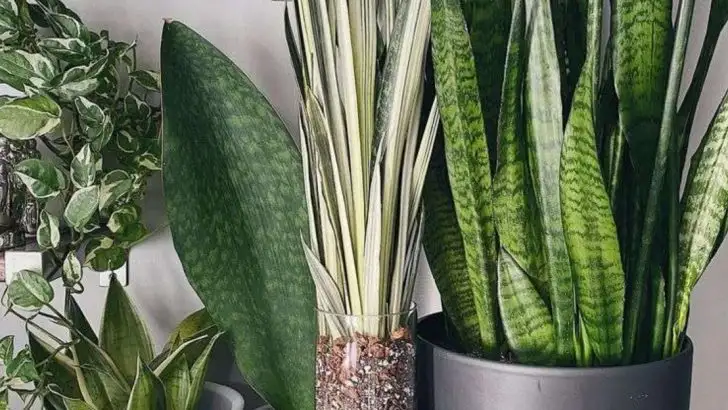When floor space is limited, think vertical. Climbing and trailing houseplants offer a dynamic way to bring greenery into your home—adding height, movement, and lush texture to walls, shelves, and hanging displays.
Climbing plants can be trained to cover trellises, frames, or bare corners, while trailing varieties gracefully spill from planters and baskets. Together, they help you create layered, living designs that draw the eye upward and make any room feel more vibrant.
In this article, discover 6 climbing houseplants and 7 trailing varieties for vertical spaces—and learn how to style them for maximum impact in your home.
Snake Plant
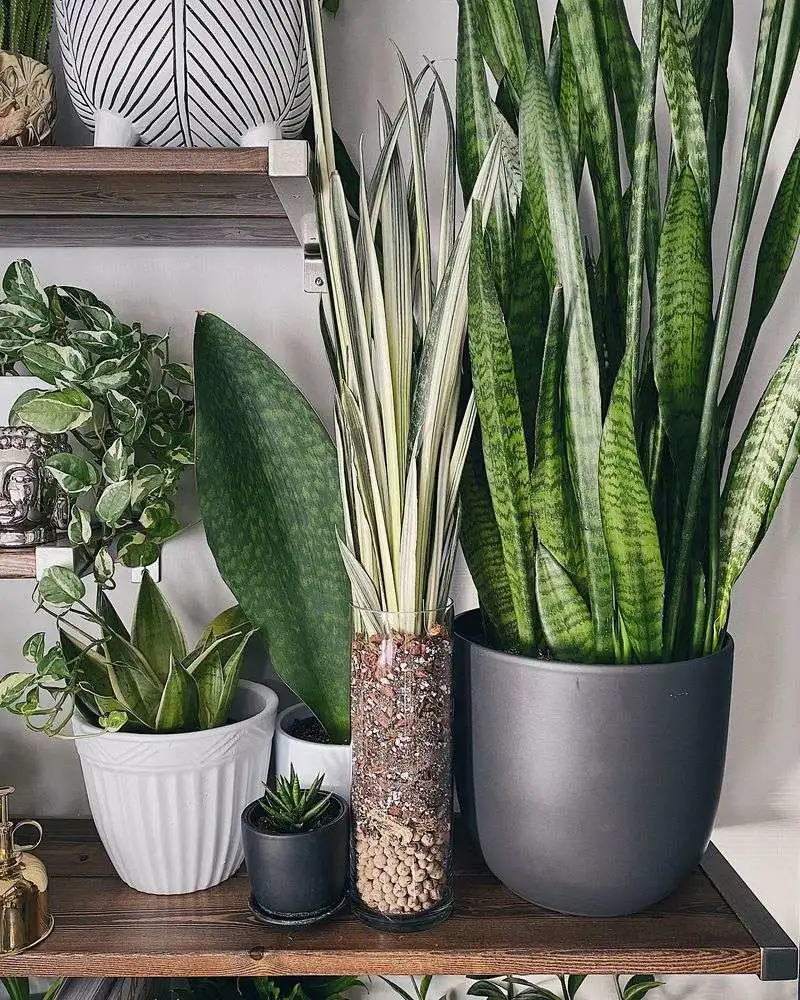
The snake plant, often called mother-in-law’s tongue, stands out with its upright leaves accentuated by striking yellow edges. Known for its ability to thrive in low light, it’s an ideal choice for those less fortunate in the sun department. This hardy plant is a robust air purifier, improving indoor air quality by filtering toxins. Its architectural elegance makes it a favorite in contemporary interiors. Did you know? This plant is native to West Africa, a testament to its resilience and adaptability.
Spider Plant

Picture a plant that doesn’t just sit there but flows gracefully with arching leaves. The spider plant is perfect for adding a dynamic element to your decor. It’s incredibly easy to care for, making it a favorite for beginners. Natural air purification is a bonus, as it actively removes pollutants. Its offshoots, or ‘spiderettes,’ give it a playful vibe. Historically, this plant has been cherished in many cultures, symbolizing renewal and growth.
Peace Lily
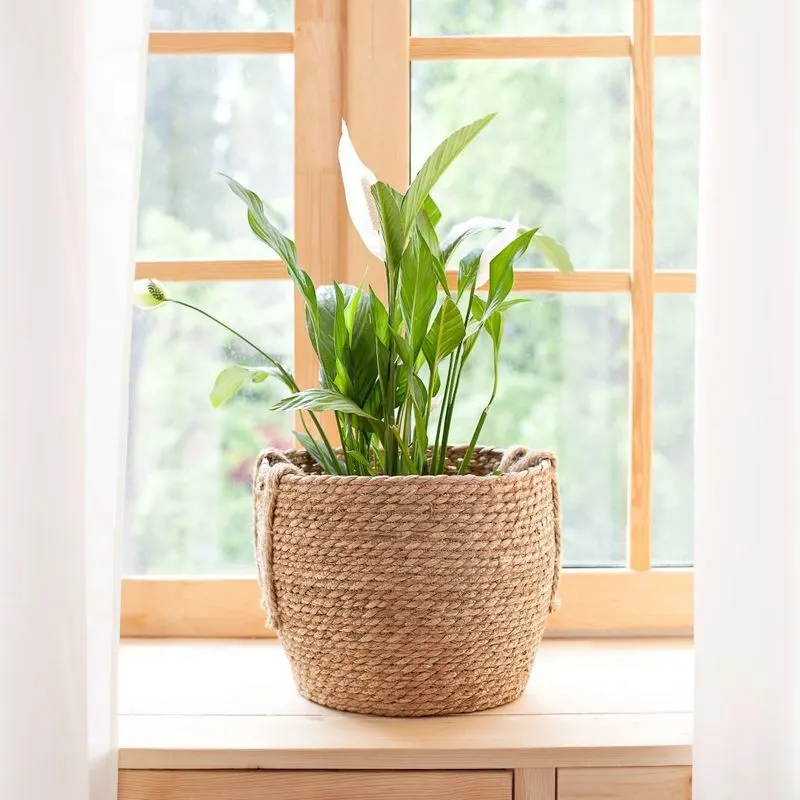
Elegant and understated, the peace lily exudes tranquility with its lush foliage and delicate white blooms. This plant is not only visually pleasing but also powerful in removing harmful toxins from the air. It’s a symbol of peace and prosperity, often given as a gift to convey good wishes. Despite its refined appearance, it’s surprisingly easy to maintain. A touch of history: the peace lily was first cultivated in tropical regions of the Americas.
English Ivy

Imagine an evergreen cascade that gracefully trails down furniture. English ivy is perfect for creating vertical interest in your space. It’s a natural air filter, reducing mold and allergens significantly. Its adaptability to different environments makes it a versatile choice for home and office settings. Fun fact: English ivy has been a symbol of fidelity and eternal life throughout history, often seen in ancient Greek and Roman decorations.
Boston Fern

The Boston fern is a classic beauty with feathery fronds that add a soft, lush feel to any area. Known for its exceptional air-purifying qualities, this fern is perfect for bathrooms or humid environments. Its vibrant green leaves provide a refreshing contrast against neutral backgrounds. Historically, it was a popular houseplant during the Victorian era, symbolizing sincerity and humility. Its presence is both soothing and invigorating.
Areca Palm

With its feathery, arching fronds, the areca palm introduces a tropical flair to any room. This palm is not only visually striking but also efficient at humidifying and purifying the air. Its gentle sway in the breeze creates a calming atmosphere. Perfect for larger spaces, it can make a grand statement. Interesting tidbit: the areca palm is often used in Indian ceremonies for its auspicious symbolism, representing hospitality and prosperity.
Rubber Plant
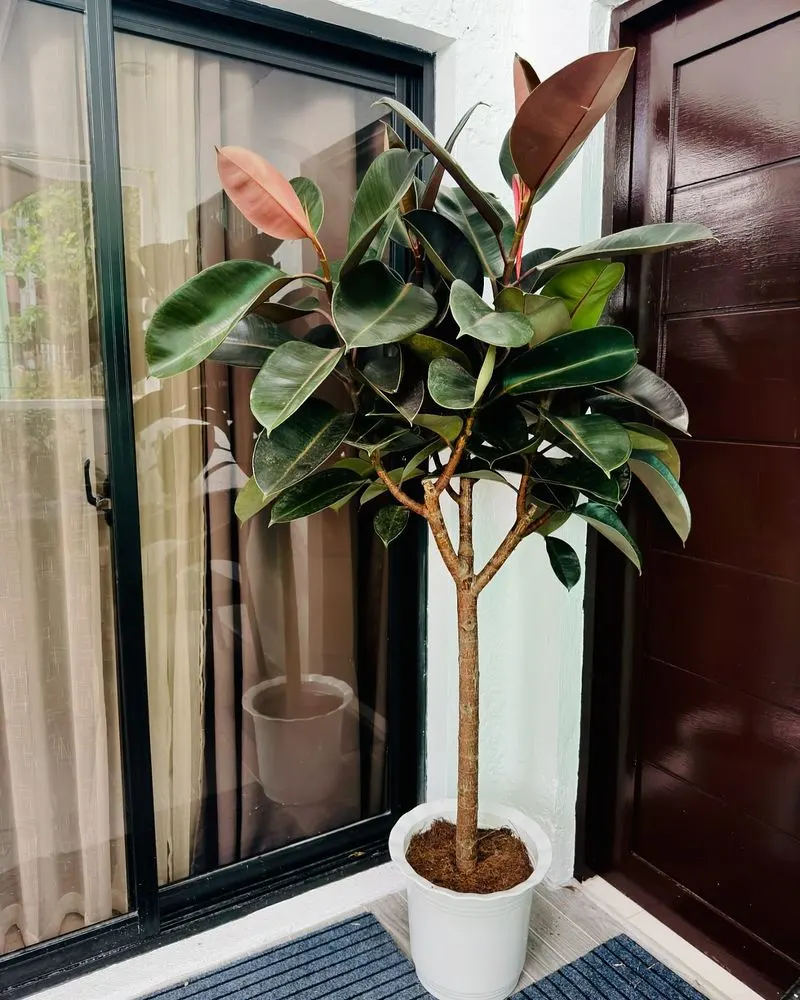
Large, glossy leaves characterize the rubber plant, making it a bold addition to any decor. It’s particularly effective at removing toxins from the air, contributing to a healthier environment. The deep green hue of its leaves adds a touch of sophistication and elegance. Easy to care for, it thrives in bright, indirect light. Did you know? The rubber plant is native to Southeast Asia and has been used for centuries for its latex-producing properties.
Bamboo Palm
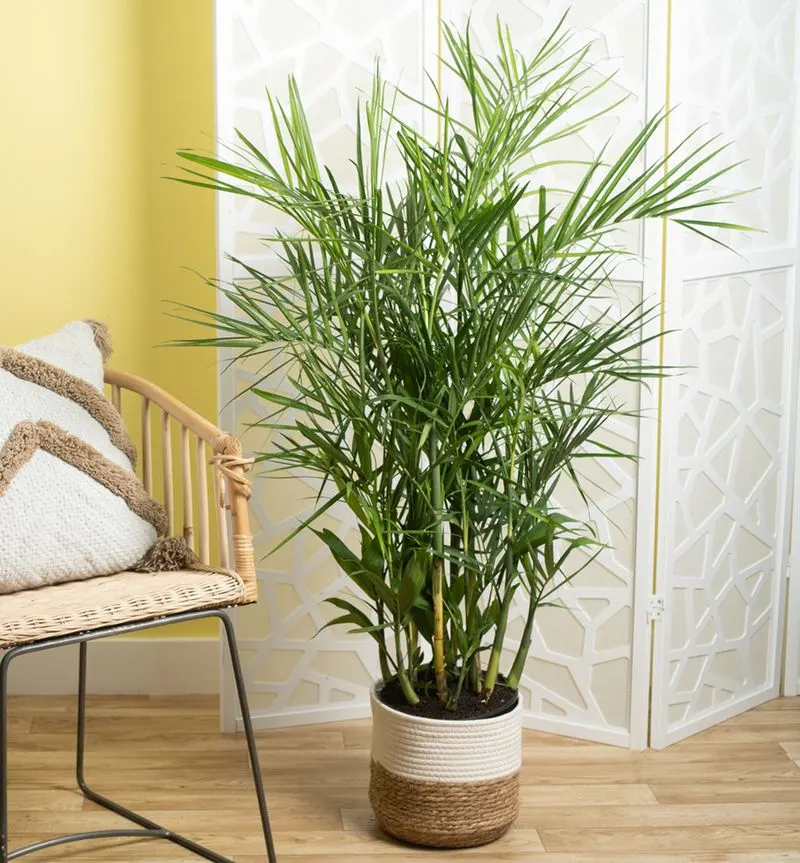
Known for its tropical origins, the bamboo palm is a staple in adding a touch of nature to interiors. Its tall, slender stems and airy fronds create a sense of openness and movement. Not just a pretty face, it acts as a natural humidifier, improving air quality. This plant is suitable for shady areas, making it versatile for various home settings. Fun trivia: bamboo palms were a favorite in Hollywood during the golden age, featuring prominently in art deco design.
Aloe Vera
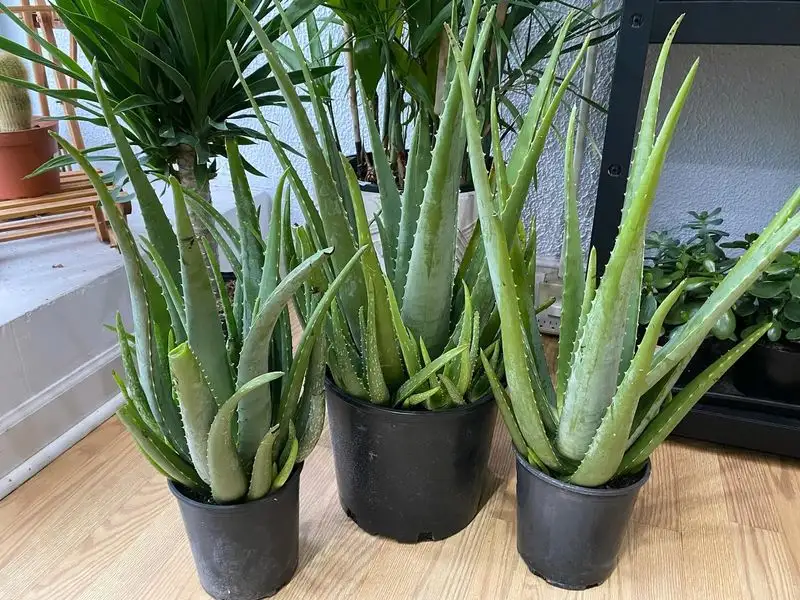
Beyond its reputation as a healing plant, aloe vera is a charming addition to indoor spaces. With its thick, fleshy leaves, it brings a sculptural quality to decor. Known for its air-purifying abilities, it’s also handy for skin treatments. The plant thrives in bright light, making it perfect for sunny spots. Historically, aloe vera has been used in traditional medicine, revered for its soothing properties for thousands of years across various cultures.
Dracaena
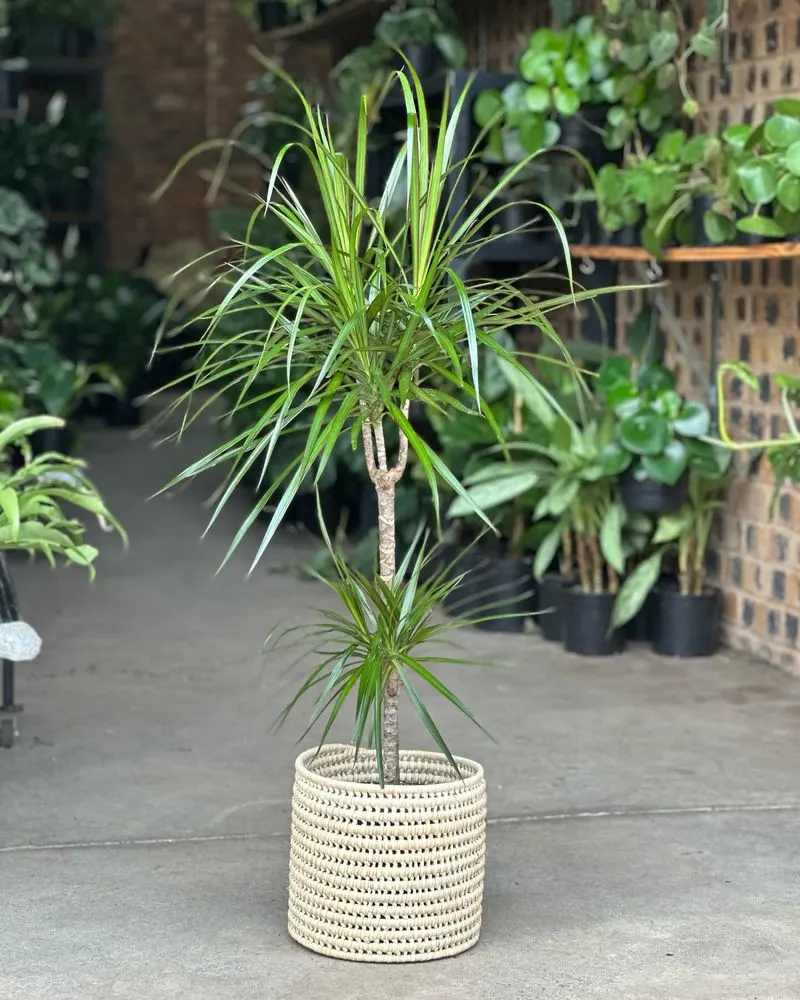
Dracaena’s dramatic foliage makes it a standout in any room. Its long, arching leaves with bold stripes add an exotic touch. Besides its visual appeal, dracaena is effective in cleaning the air, removing toxins commonly found in homes. It’s adaptable to low light and requires minimal care, making it ideal for busy lifestyles. A quirky fact: dracaena is derived from the Greek word ‘drakaina,’ meaning female dragon, highlighting its fierce beauty.
Philodendron
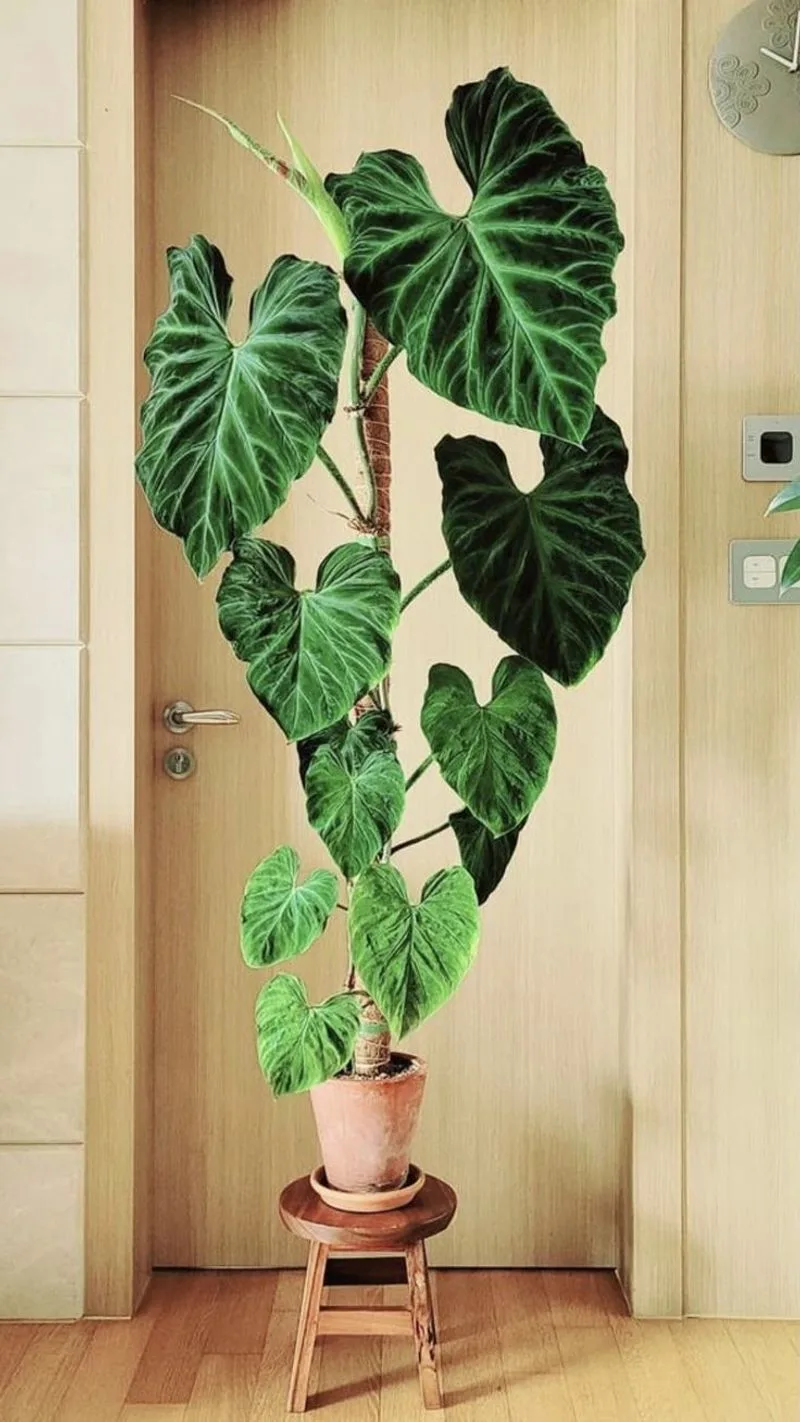
With heart-shaped leaves, the philodendron adds a touch of warmth and charm. Its trailing vines bring a lively feel to any setting. Well-loved for its easy-going nature, it’s a popular choice for new plant parents. The plant aids in air purification, tackling common indoor pollutants. Its adaptability to different light conditions is impressive. Fun fact: the name philodendron is derived from Greek, meaning ‘tree-loving,’ which speaks to its climbing nature.
Fiddle Leaf Fig
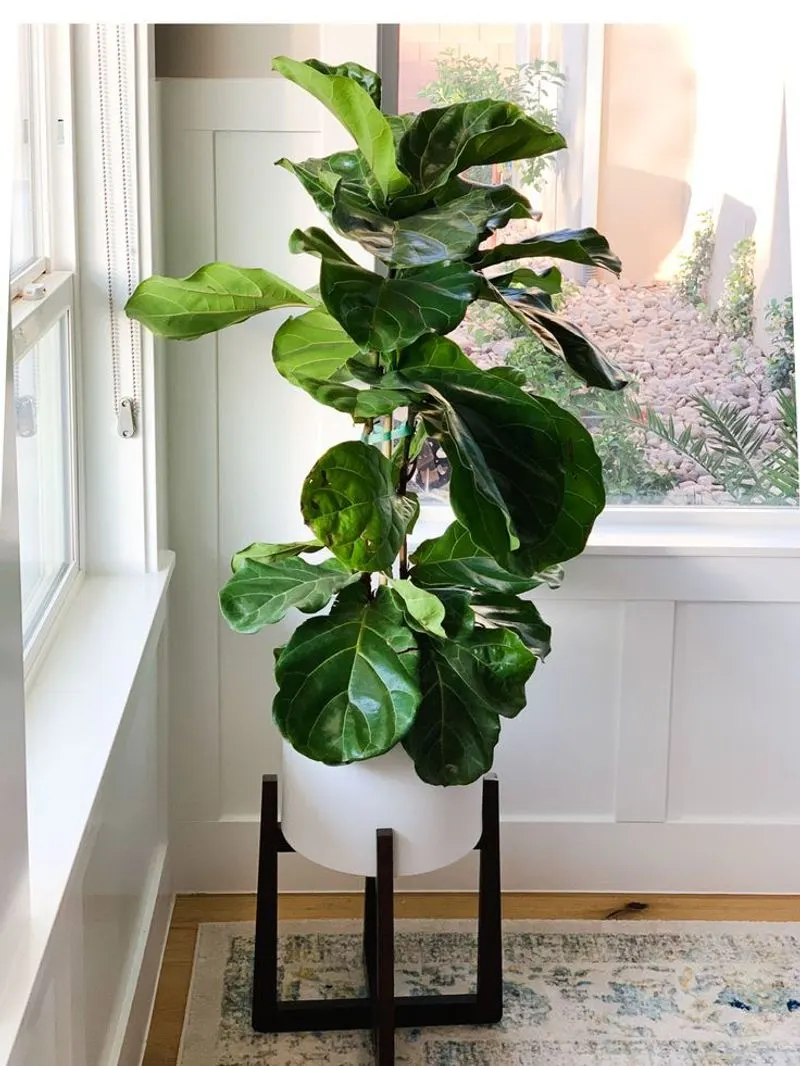
Known for its broad, violin-shaped leaves, the fiddle leaf fig is a showstopper. It’s perfect for adding height and drama to a room. Besides its aesthetic value, it helps in improving air quality, making it a practical choice for homeowners. It thrives in sunny conditions, so a well-lit area is ideal. A bit of trivia: this plant originates from the tropical regions of western Africa, where it grows as a banyan tree in the wild.
Chinese Evergreen
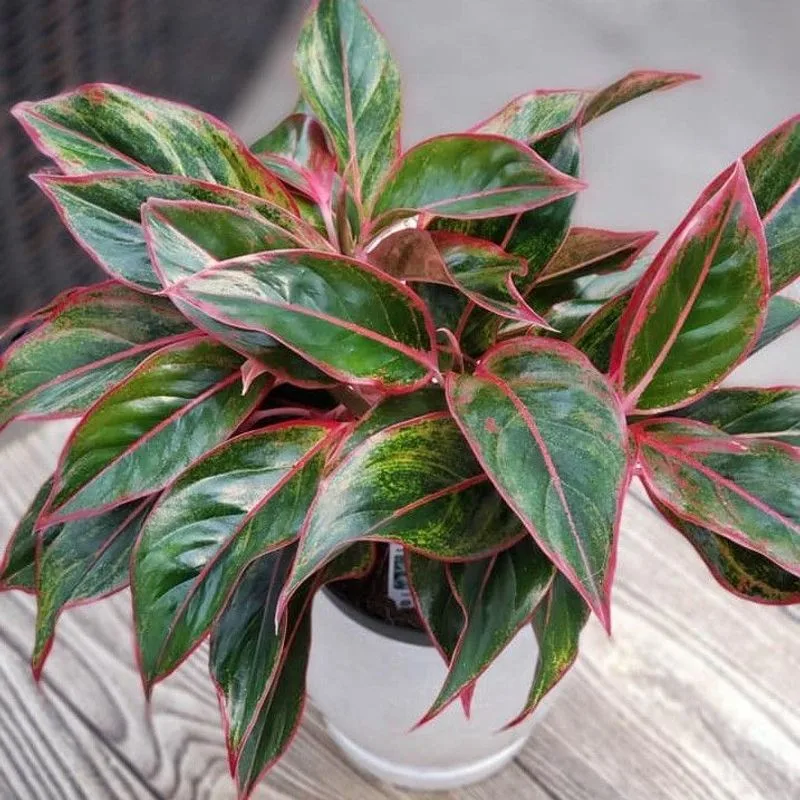
The Chinese evergreen is renowned for its variegated leaves that bring a splash of color. Its low-maintenance nature makes it a favorite among busy individuals. Besides adding visual interest, it’s effective in filtering indoor air pollutants. Suitable for various environments, it can tolerate low light conditions. Interesting to note: in the Philippines, it’s considered a lucky plant, believed to bring good fortune to its owners.
Calathea
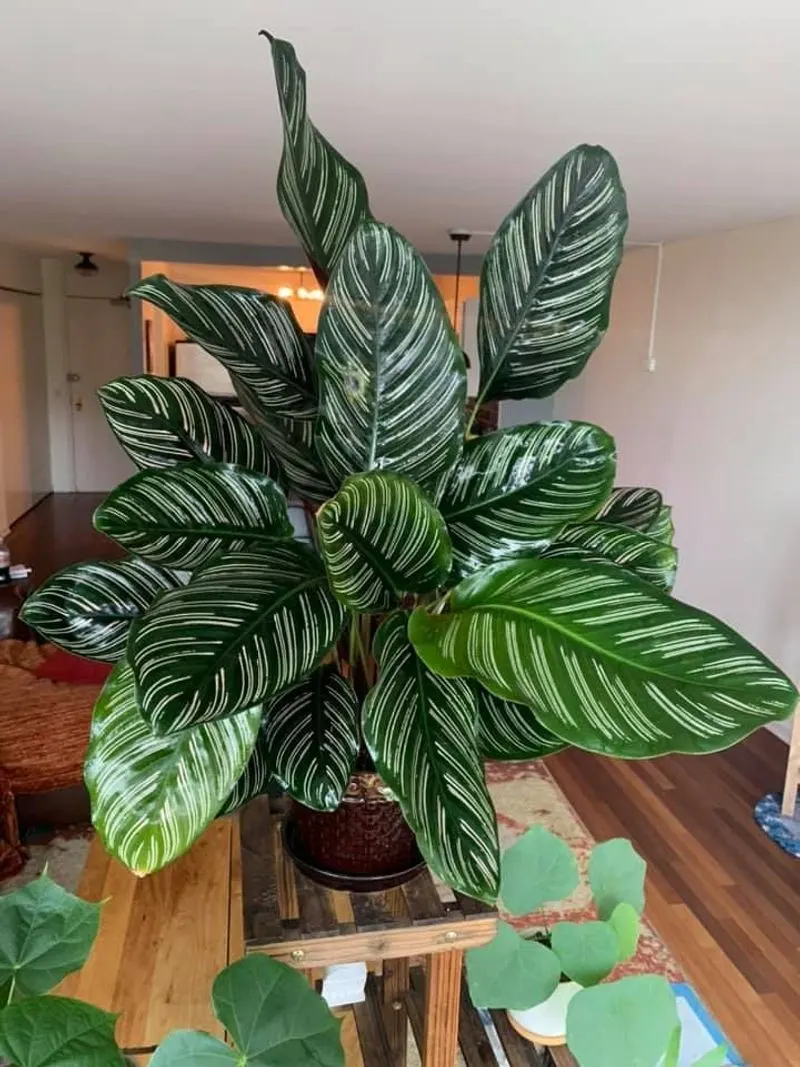
Calathea stands out with its intricate leaf patterns and vibrant colors. This plant offers visual intrigue, with leaves that open and close in response to light. An efficient air purifier, it’s perfect for creating a healthy indoor atmosphere. It requires a bit more care, thriving in humidity and indirect light. A unique aspect: calathea plants are often associated with new beginnings, symbolizing growth and change in some cultures.
Golden Pothos
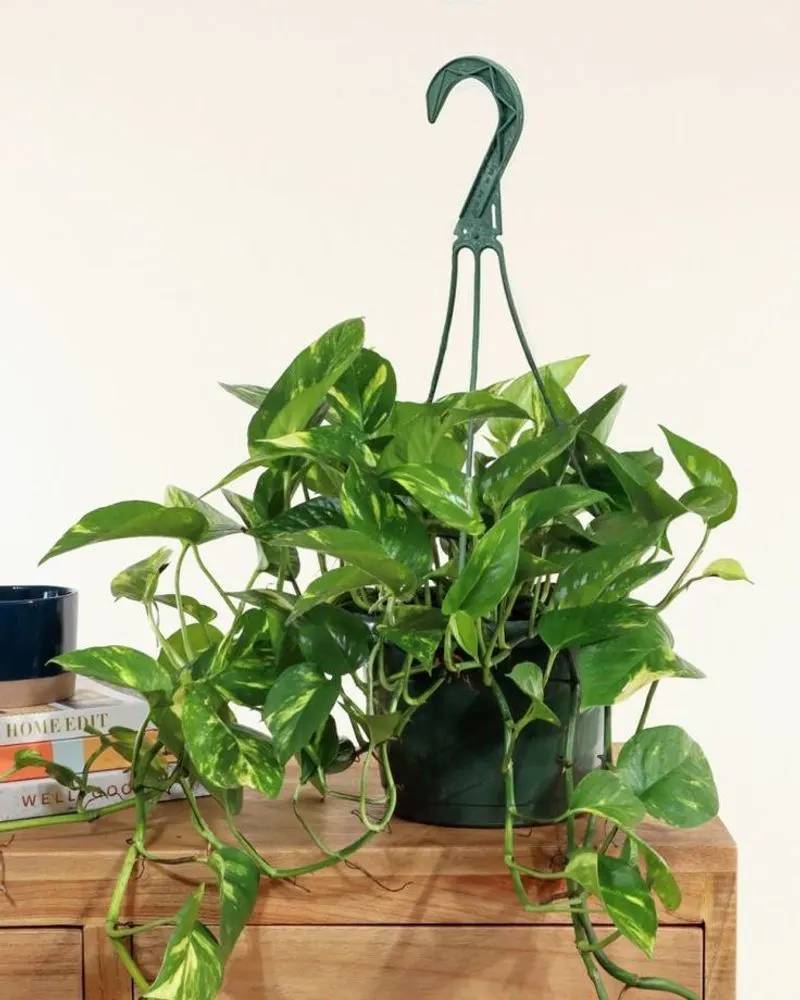
Golden pothos is a versatile and forgiving plant, often recommended for beginners. Its cascading vines with variegated leaves add a splash of greenery and elegance. Known for its ability to purify air, it’s effective in removing toxins like formaldehyde. It thrives in a range of light conditions, making it an adaptable choice for any room. Fun fact: in some cultures, it’s called ‘devil’s ivy’ because it’s nearly impossible to kill and stays green even in the dark.

